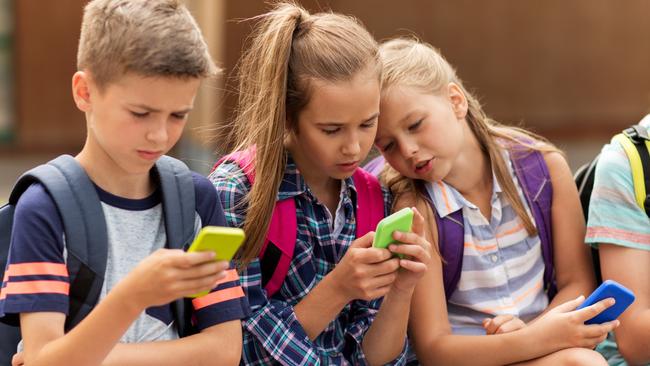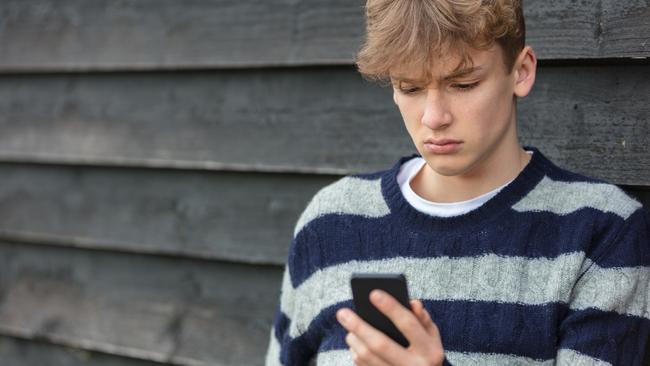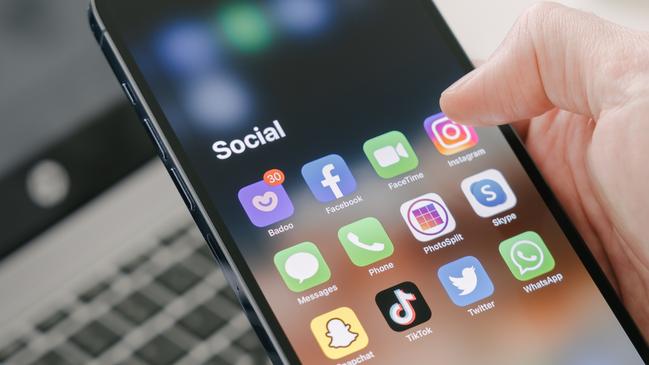Personally, I blame social media. Yes, we need more evidence about the impact of social media on young people. Too often correlation is confused with causation. There is, however, plenty of worrying data.
In the decade after the iPhone arrived and before Covid-19 hit, the number of young girls being hospitalised in Australia due to self-harm doubled.
Anxiety and other mental problems are also on the rise. We owe it to our children to get to the bottom of this and act. Of course, social media has many positives we should be careful to preserve. Social media provides community. Social media provides information.
But young people can access these benefits even if they are banned from adult zones. No one suggests young people need to hang about the public bar to join adult conversations. Young people can still have a private WhatsApp group of their friends. Or access age-appropriate content about drugs or alcohol on YouTube Kids.

Indeed, imagine that an age ban of sites such as Instagram and TikTok will incentivise the tech giants to develop safe zones, with safe algorithms. Think TikTok Teens or Instagram Youth. This is more than Instagram simply introducing teenage accounts with better privacy. This is having special places for young people and only young people.
The precautionary principle suggests that there is a compelling social responsibility to protect the public, especially the young, from exposure to harm when scientific investigation has found a plausible risk. And it seems there is a plausible risk in young people being exposed to adult social media.
Of course, turning 16 doesn’t mean you’re any better equipped to deal with social media. Just like turning 18 doesn’t mean you’re any better equipped to deal with alcohol or tobacco. We therefore still need education and regulation to prepare and protect young people from unthrottled social media – just as we have education and regulation to prepare and protect young people from alcohol and tobacco.

One amusing side-effect of an age ban on social media that few seem to have noticed is that it will get rid of all the bots. Human voices are being drowned out by bots amplifying a sea of synthetic and harmful content. But bots will fail the age test so social media ought to be restored as a place for human conversation.
The final objection to a ban is that it won’t work or will invade privacy, not just of children but of everyone in Australia. Here, there’s a simple solution that is anonymous and effective. Not even VPNs will get around it. Devices should record the age of their users.
When you turn on a phone or a computer for the first time, you need to record the language and geographical location of the user. We need simply also require that the user’s age be recorded too. Then any web service can query a device to confirm if the content is age appropriate. We can even age limit pornography this way.

The onus of recording the age can be placed on the person or company selling the device. Just as with alcohol, anyone who looks well over the age limit can buy a device without restriction. No ID required. But anyone who looks close to the age limit will need to provide some evidence of their age so the device can be set up appropriately.
When a smartphone gets passed down a generation, the adult passing it down can simply lower the age of the device’s user. It’s such a simple solution, you wonder why the tech companies didn’t already implement it. But then the cynic in me remembers the vast profits that tech companies make from keeping their content unrestricted.
Toby Walsh is Laureate Fellow and Scientia Professor of Artificial Intelligence at the Department of Computer Science and Engineering at the University of New South Wales.






The Labor government’s decision to rush through legislation to ban those under 16 from social media has unsurprisingly divided people. But then what doesn’t divide us these days?